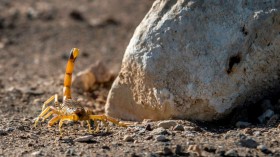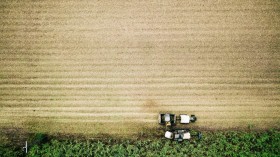Scientists have gained an understanding of the unique cellular and molecular mechanisms behind tooth regeneration in American alligators. Hailing their find as a first, the researchers report their discovery could be used as a resource in stimulating tooth renewal in humans.
Alligators can go through as many as 3,000 teeth in a lifetime. It is estimated that a 13-foot long alligator will replace each of its 80 teeth about four dozen times during its existence. At that rate, one alligator would go through as many teeth as 50 humans.
Humans naturally only have two sets of teeth-baby teeth and adult teeth," said Cheng-Ming Chuong, lead researcher in the new study. "Ultimately, we want to identify stem cells that can be used as a resource to stimulate tooth renewal in adult humans who have lost teeth. But, to do that, we must first understand how they renew in other animals and why they stop in people."
Because alligators have well-organized teeth with similar form and structure as mammalian teeth and are capable of lifelong tooth renewal, the authors reasoned that they might serve as models for mammalian tooth replacement.
Alligators are the ideal model for comparison to human teeth because their teeth are implanted in the sockets of dental bone, like human teeth, said Ping Wu, another of the study's authors.
The researchers found that each alligator tooth is a complex unit of three components-a functional tooth, a replacement tooth, and the dental lamina (a layer of membranous cell tissue -in different developmental stages. The structure for the tooth system allows for one tooth to break off and be quickly replaced with a mature one.
"The cells in the alligator's dental lamina behaved like we would expect stem cells to behave. In the future, we hope to isolate those cells from the dental lamina to see whether we can use them to regenerate teeth in the lab," said co-author Randel l Widelitz in a statement.
In their paper the researchers wrote, "Based on our study, it may be possible to identify the regulatory network for tooth cycling. This knowledge will enable us to either arouse latent stem cells in the human dental lamina remnant to restart a normal renewal process in adults who have lost teeth or stop uncontrolled tooth generation in patients with supernumerary teeth."
If their future research is successful, the days of dentures may be a thing of the past.
The research paper is published in the journal Proceedings of the National Academy of Sciences.
© 2024 NatureWorldNews.com All rights reserved. Do not reproduce without permission.

![Bison Herd Consisting of 170 Reintroduced Individuals in Romania Could Store Carbon Emissions Equivalent to 43,000 Cars [Study]](https://1471793142.rsc.cdn77.org/data/thumbs/full/70533/280/157/50/40/bison-herd-consisting-of-170-reintroduced-individuals-in-romania-could-store-carbon-emissions-equivalent-to-43-000-cars-study.jpg)



